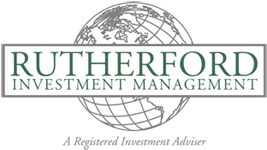Published June 11, 2012

All of these factors impact the U.S., where the rate of economic growth (gross domestic product) is less than 2 percent. U.S. factory output is near a 2½-year low, indicating the economy may be headed back toward recession.
The Institute for Supply Management reported that its business barometer fell 3.5 points to 52.7 in May; it was the third straight monthly drop and the lowest reading since September 2009 (readings above 50 reflect economic expansion). The consensus estimate was for the barometer to continue at 56; so the current reading reflected a significant weakening.
At the same time, the ISM production index fell 7.1 points in May to a neutral reading of 50, also the lowest since September 2009. This index is compiled from surveys of purchasing managers in the Chicago region.
Also, the Labor Department showed that the number of workers filing for unemployment benefits rose by 10,000, to 383,000, for the week that ended May 26.
On June 1, the jobs report from the Labor Department showed that non farm payroll grew by a lackluster 69,000 last month. The rate of unemployment ticked up to 8.2 percent. All of the growth came from private industry: 82,000 jobs were added, but governments cut payrolls by 13,000.
Compounding the already weak report, payroll gains in March and April were revised down by a combined 49,000. U.S. Federal Reserve officials expect only gradual improvement in the U.S. labor market through the end of 2012. The Fed expects inflation to remain at or below 2 percent this year, and for growth to stay in the 2 to 2.4 percent range.
A gauge of U.S. consumer confidence fell to 64.9 from 68.7 in April. Job seekers’ outlooks also took a hit, because 18 million unemployed Americans are pursuing 3 million jobs. Among the major obstacles in front of the economy is the “fiscal cliff.” It’s named for the automatic triggers built into the budget by the deal on the debt ceiling last year, and the simultaneous expiration of the Bush tax cuts.
The Congressional Budget Office estimates the impact of the potential cuts at a 4 percent fiscal contraction, which would be felt almost overnight. This would place the cuts on par with some of the largest ever, which could lead to a recession on the heels of the Great Recession, from which we have not yet recovered.
The country would have a hard time dealing with such an event. It could perhaps be so bad that even the politicians will wake up to that fact.
Interest rates plumbed new lows and the yield curve nearly flattened. A flat yield curve may mean no growth in the economy or that the economy is slowing and headed lower. An inverted yield curve, where long-term rates are lower than short-term rates, sometimes means a recession in the offing. It is all but certain that the Fed will continue its “operation twist” bond-buying program in an effort to extend central banks’ holdings of long-term Treasurys. Quantitative easing may be back on the table; however, with interest rates so low already, there is not much room to work with. The Fed likely will not change its plan to keep interest rates low until at least 2014.
As the economy slowed, the race for U.S. president tightened. Recent polls revealed not only a deadlock – both candidates have 46 percent of the vote – but relatively few undecided voters. Amid all the grim news were some bright spots. For instance, personal spending and income increased in April from the prior month. Incomes rose 0.2 percent and spending increased 0.3 percent.
Auto sales showed a healthy gain, with domestic automakers GM up 10 percent and Chrysler up 30 percent. The price of oil fell below $80 for West Texas Intermediate, and below $100 for European Brent, the lowest in some time. The dollar strengthened against the euro, though it lost ground to the yen. With most of the problems originating in Europe the time seems right for dramatic action from there; however, because the political framework seems frozen in amber, not much can be expected. Whether the euro zone will crumble or a pan European solution will materialize is yet unclear, but it must come soon.
